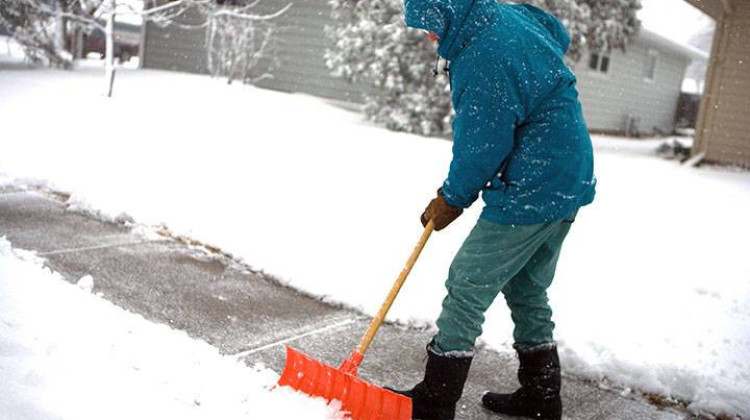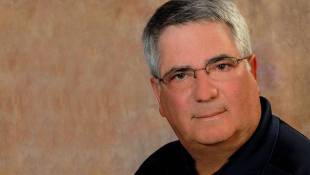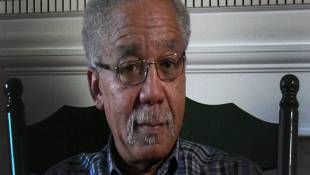This year is the 50th anniversary of Freedom Summer - the effort to register African American voters in southern states. Hundreds of mostly college-age young people took part - including several from Indiana. WFYI's Leigh DeNoon spoke with John Dittmer, professor emeritus of history at DePauw University, and Dr. Thomas Brown, who was a member of the Student Nonviolent Coordinating Committee, about Freedom Summer.

Part One of a Three-Part Series:
The seeds for Freedom Summer were planted long before 1964. In the first election after the end of World War Two, proud black veterans in Mississippi -- including Civil Rights leader Medgar Evers – were turned back from their polling place by a gang of angry white voters. Evers would spend years working to register black voters before his murder in June of 1963.
Indianapolis native and longtime Hoosier legislator Bill Crawford says he got his first taste of Jim Crow laws when his U.S. Navy boot camp in Illinois ended and he flew to Charleston, South Carolina on Thanksgiving Day in 1954. Crawford was the only African American in the group of sailors trying to hail a cab to a restaurant. The inter-racial group was denied a ride.
“And so I’m looking around for what I see other African Americans do. And we saw this lady walk into a restaurant and so we walked in and she went straight back to the kitchen. We sat down and I’m wearing my dress uniform – my dress blues – a United States Naval serviceman. Lady come over and very politely said, “We don’t serve colored in here.” So, at that point, I went back to the base. I said, “Y’all go ahead I’m not going to spoil y’all’s afternoon” and I had to make that adjustment to that Jim Crow. But that stuck with me,” Crawford said.
Not long after that, in August 1955, 14-year old Emmett Till of Chicago was brutally murdered while visiting relatives in Mississippi. The young African American reportedly flirted with a white grocery store clerk when he and some cousins had stopped in a store to buy bubble gum. A few nights later, he was kidnapped from his uncle’s home, beaten, shot, tied with barbed wire and thrown in the Tallahatchie River. Till’s mother allowed photographs of his body to be published to illustrate the brutality.
“His mother had the courage to show that picture on the front cover of Jet magazine. And I think that began to galvanize and focus attention on a lot of us that were part time revolutionaries, if you will,” Crawford said.
Two white men were charged and tried for Till’s kidnapping and murder. A few months after being acquitted by the all-white, all-male jury, knowing they couldn’t be tried twice for the same crime, the two confessed to the murder in a Look Magazine story. Till’s murder helped empower Civil Rights activists. Over the next 10 years, the movement included bus boycotts, student-led sit-ins, the March on Washington, Freedom Rides and the March from Selma to Montgomery. John Dittmer is professor emeritus of history at DePauw University. In 1964, he was a grad student at Indiana University and a budding scholar of black history and civil rights. He didn’t go to Mississippi then, but like most Americans he watched the watershed events unfold on TV.
“You had a period of a hundred years of rigid racial segregation known as the Jim Crow era. Blacks were prescribed in every way. They got inferior education, inferior, if any, healthcare, they had no job opportunities and the races were rigidly separated in all phases of human activity,” Dittmer said.
Leaders of the Student Nonviolent Coordinating Committee soberly instructed Freedom Summer participants in Oxford, Ohio prior to their deployment down south, about the very real, life-threatening dangers of volunteering. They were taught to respond non-violently if confronted or arrested, to travel in groups and never be released from jail alone. Dittmer says the gravity of those lessons became clear very quickly.
“At the beginning of the second week of the training session, a group had come back to Mississippi and three of the workers – two from the Congress of Racial Equality – Mickey Schwerner who was white and James Chaney who was black – went to investigate a black church that had been bombed by the Klan. And they took them a volunteer fresh from the orientation session, Andrew Goodman. The three of them were arrested in Philadelphia, Mississippi in Neshoba County. They were taken to jail. They were released and then they disappeared,” Dittmer said.
Their burned-out car was found, but there was no sign of the three men for weeks.
“The FBI had an informant who told them that they had been murdered and their bodies put deep in an earthen dam in rural Mississippi. Well, from the beginning that story was page one all over the world. It had a major impact on focusing attention on Mississippi. And of course, if you’re a volunteer coming down not knowing what to expect, to be faced squarely with the possibility that you too could die, was a very sobering experience,” Dittmer said.
In 1967, Dittmer – who is white -- took a job at historically black Tougaloo College near Jackson, Mississippi – a school at center stage during the Civil Rights Movement. In the years before Freedom Summer the school had quietly been hosting forums where blacks and whites could strategize about how to dismantle Mississippi’s system of racial segregation. Dittmer is also the author of “Local People – The Struggle for Civil Rights in Mississippi”.
 DONATE
DONATE





 View More Articles
View More Articles


 Support WFYI. We can't do it without you.
Support WFYI. We can't do it without you.